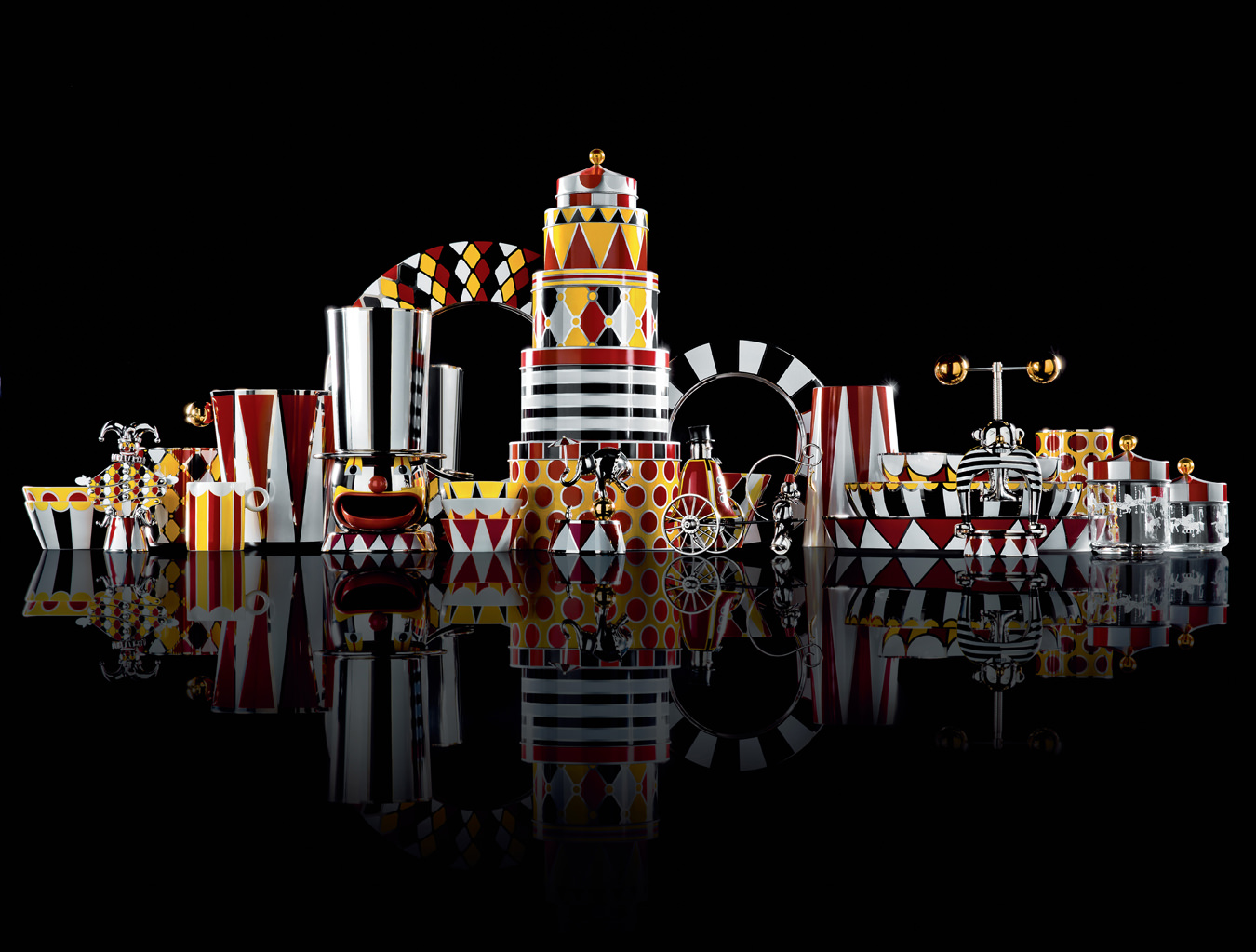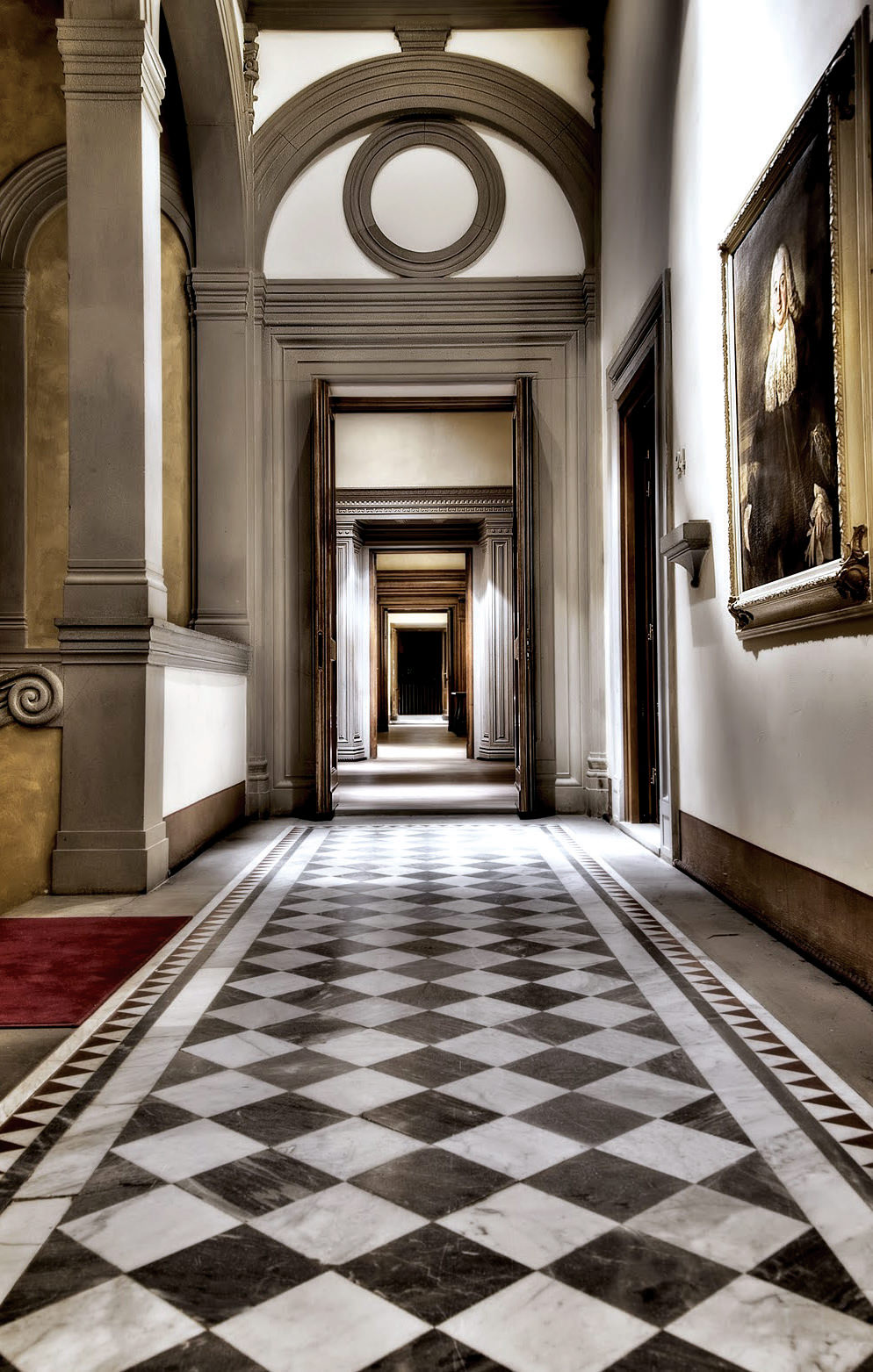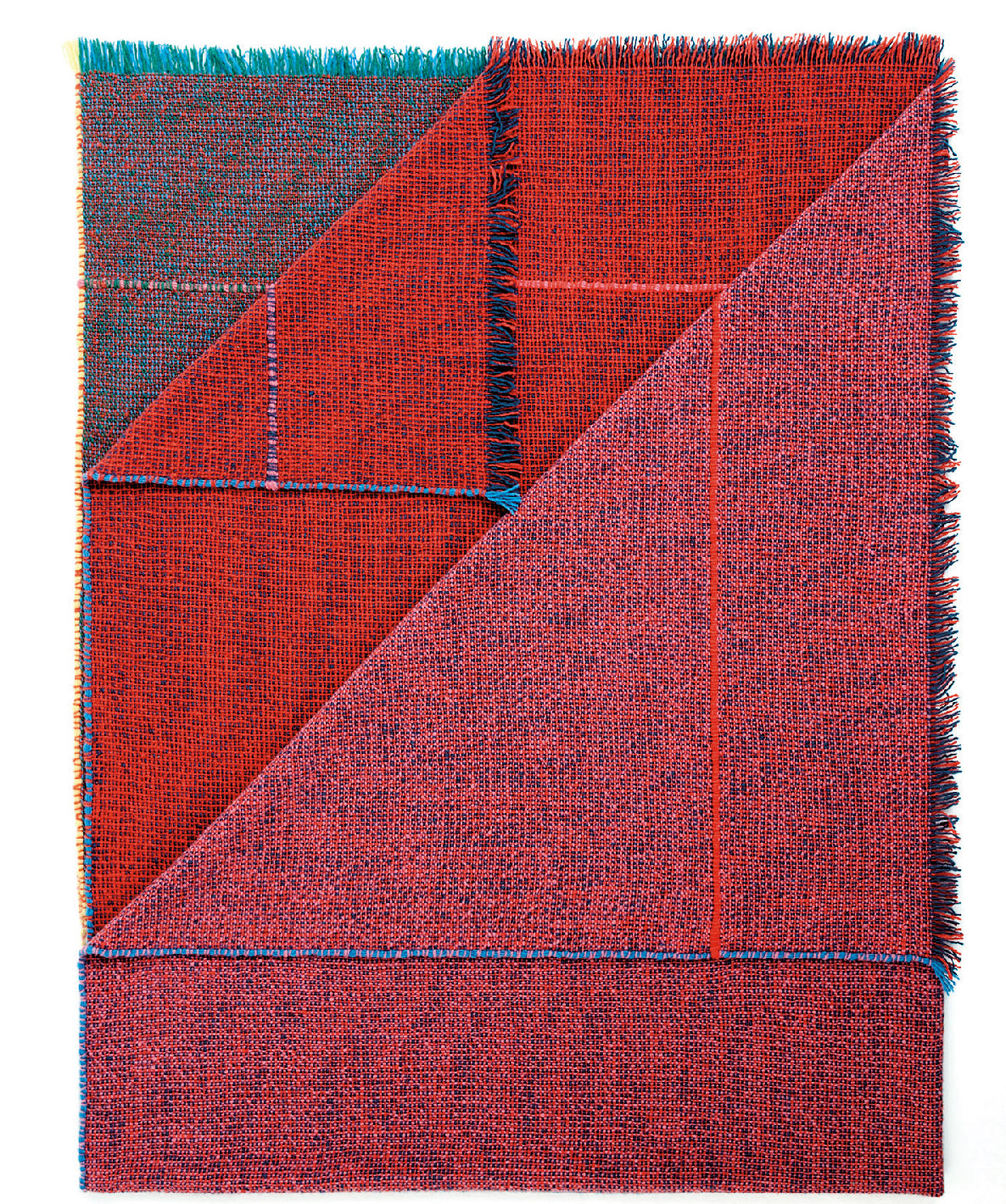Cirque du Alessi
A Marcel Wanders collection.

Eccentric characters. Colourful aesthetics. A bold suspension of disbelief. When the circus comes to town, the dream world comes to life, and Dutch design mastermind Marcel Wanders is right at home in this whimsical realm.
It’s no wonder that this wild scene also serves as inspiration for his latest Alessi collection, Circus. “With these pieces, we wanted to make [the viewer] feel like a kid again,” says Wanders with a smile. “The circus has these wonderful, kind of mysterious people who are doing all these amazing things, and it is also a place of mischief.”
When conceptualizing Circus, Wanders and his company’s creative director Gabriele Chiave sought out strong colours that would fare well alongside the classic stainless steel of traditional Alessi wares, then referenced circus performers’ costumes for the playful design of segmented stripes, diamonds, and circles.
The collection is produced at the Alessi factory in Crusinallo, Italy—a special tinplate application is used for the unique colouring—and pieces range from salad bowls to ice buckets along with the full set of tableware and a five-piece limited edition line. The latter is a set of statement kitchen tools that act as countertop collectibles with distinct personalities: there is a candy dispenser called the Candyman whose mouth overflows with sweets; a wacky Jester corkscrew; a Ringleader call bell, complete with shiny carriage; and a Strongman nutcracker, who cracks nuts with his feet.
Dutch design mastermind Marcel Wanders is right at home in this whimsical realm.
An ornamental Ballerina music box is the fifth piece, and it features an elephant balanced atop a golden ball in front of a silver mouse. It plays “Entry of the Gladiators” by Julius Fučík, the classic tune that starts up most circuses. “I love all of the pieces, but today I love the Ballerina,” laughs Wanders when asked to select a favourite. “A good friend of mine has just had a baby daughter, and I think that falling asleep with a beautiful ballerina on the side of her bed will be meaningful for her. It will stay with her for the rest of her life. So that is [my choice] today—tomorrow is another one.” Each lively character becomes even more personal due to its limited creation (the Ballerina, for instance, is available in a limited edition numbered zero to 999, and in nine artist’s proofs).
Wanders flourishes when he has freedom to play within boundaries, so the designer did not reference a specific character for each piece. “If you look at old pictures of, let’s say, the [typical] ‘strongman’, you see that all the examples you can find are special ones. Our gathered consciousness—the archetypes we create in our heads—can never actually be found.” So, Wanders invented characters that he wanted to see. “In the end, we wanted to create an overall recognizable feeling and [that came from] a series of ideas that we already had in our minds. There are always too many ideas, so you have to make choices.” Wanders hints at designing additions for the Circus collection down the road, but for now his focus is on the troupe at hand.
Wanders flourishes when he has freedom to play within boundaries.
At a launch event for the collection at Wanders’s studio in Amsterdam this past fall, actors dressed as characters roamed amidst a full-scale circus atmosphere. A magician in a top hat performed tricks, and a man strutted around the room on stilts. Alberto Alessi, the third-generation director of the Italian design brand, was present, and when Wanders spoke to the intimate gathering about Alessi, his passion was evident. “I think of their metalwork from the ’80s—so precious, so incredible—they can do it like no other. In those years, when I was in art school, [Alessi] kind of was the only company that represented the post-modernist movement. And that, to me, is one of the most important things that happened in those past years.”
Wanders’s relationship with Alessi dates back to 2011 when their first joint tableware project, the Dressed collection, debuted. Asked to speak to the act of collaborating with a big brand, he breaks it down into Wanders-esque metaphor, illustrating the creative path to completion quite beautifully. “It’s like this: I have 1,000 puzzle pieces in the box and every piece is an opportunity. An idea, a connection, a technology—whatever. The company I am working with has another box of 1,000 pieces—inside there is machinery, a communication network, and so on,” Wanders explains carefully. “So at the end, we have two boxes of 1,000 pieces and then you have to put them together and make a complete puzzle, but the puzzle consists of 200 pieces. That is 200 different ideas that have to come together. And you might be thinking that on the box you should have the picture of the [final] design. But there is nothing there. So, you have to make the puzzle with no example. And then at some point, you’re at the last puzzle piece. And you know what the strange thing is? You don’t even have to put it in because it just falls into place,” he pauses. “If you have to hammer in the last puzzle piece, you know it’s just not right.”
_________
Never miss a story. Sign up for NUVO’s weekly newsletter.





